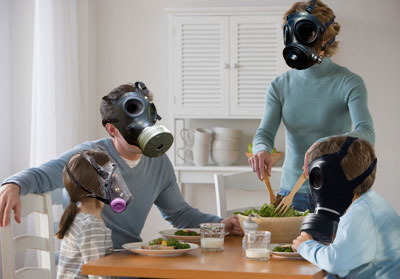Good air flow and ventilation in your home is of key importance to you and your family’s health. Mold can easily grow and thrive within areas of your home where ventilation is poor and the air is stagnant. Since we spend most of our time indoors it is a critical factor that the air we breathe is clean and free from toxins.
Smoke, dust, and residual vapors from cleaning chemicals can make the air within your home 2-5 times worse than the air outdoors.

Signs of Poor Ventilation
- A stagnant smell of mold/mildew within closed areas like closets & pantries.
- The Lingering Smell of Cooked Food
- Allergy Symptoms: Watery eyes, Runny Nose, etc.
- Condensation appears on the inside of windows and cooler surfaces
Chemicals
The chemicals that are used within your home can be bad for your respiratory system. It is important that the rooms in your home are well ventilated to allow the chemicals to escape into the outdoor air and not linger around inside. Look for odors from the following chemicals to know if you have a ventilation issue:
- Pesticides
- Paint & Solvents
- House Cleaning Supplies
- Furniture & Carpet Cleaners
Particles in the Air
The following particles can be in your air and hazardous to your health. It can cause you respiratory or allergic issues if ventilation in your home is an issue.
- Lead
- Pollen
- Asbestos
- Pet Dander
- Mold Spores
Too Much Moisture in the Air
Moisture in the air can cause extensive damage to your home’s structure. Moisture in the air gives mold a great environment for mold to form. Too much moisture in the air can also cause allergy issues because it also promotes the growth of bacteria, mildew, and dry rot.
(404) 585-7906